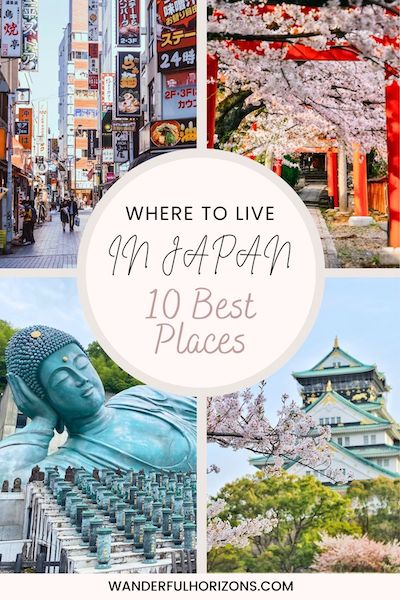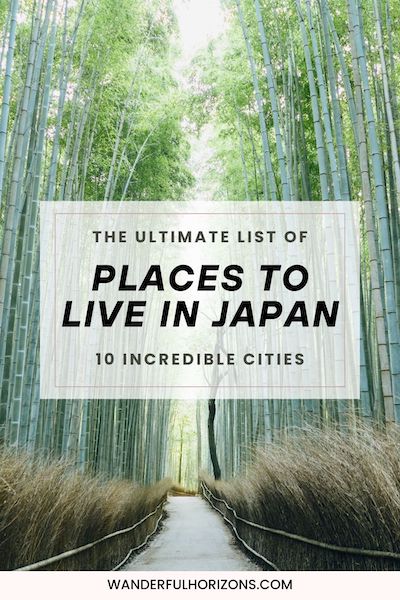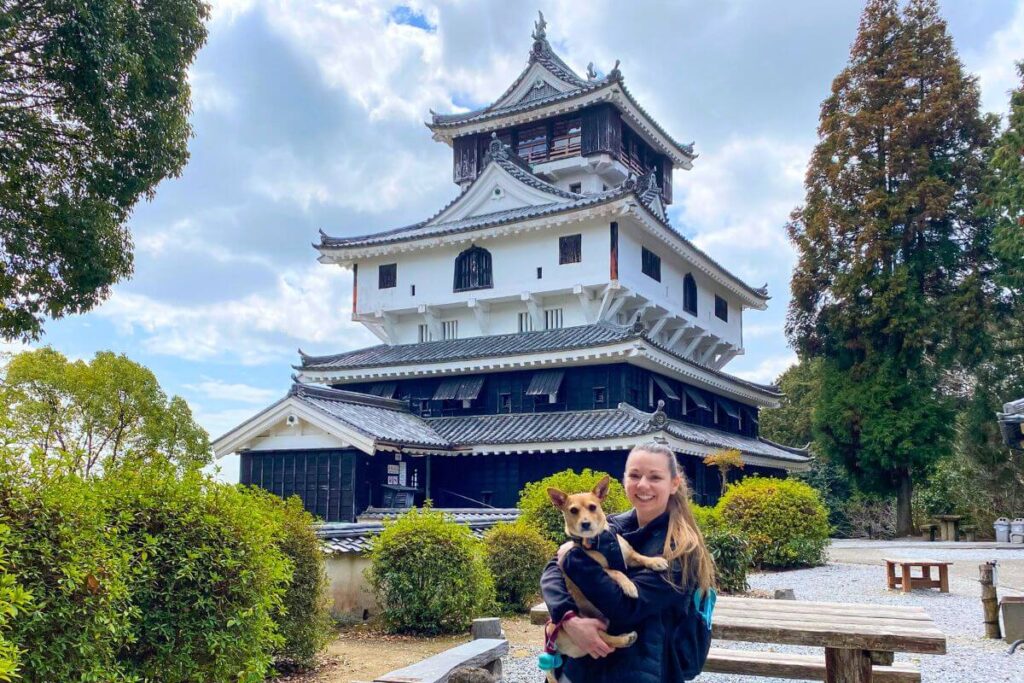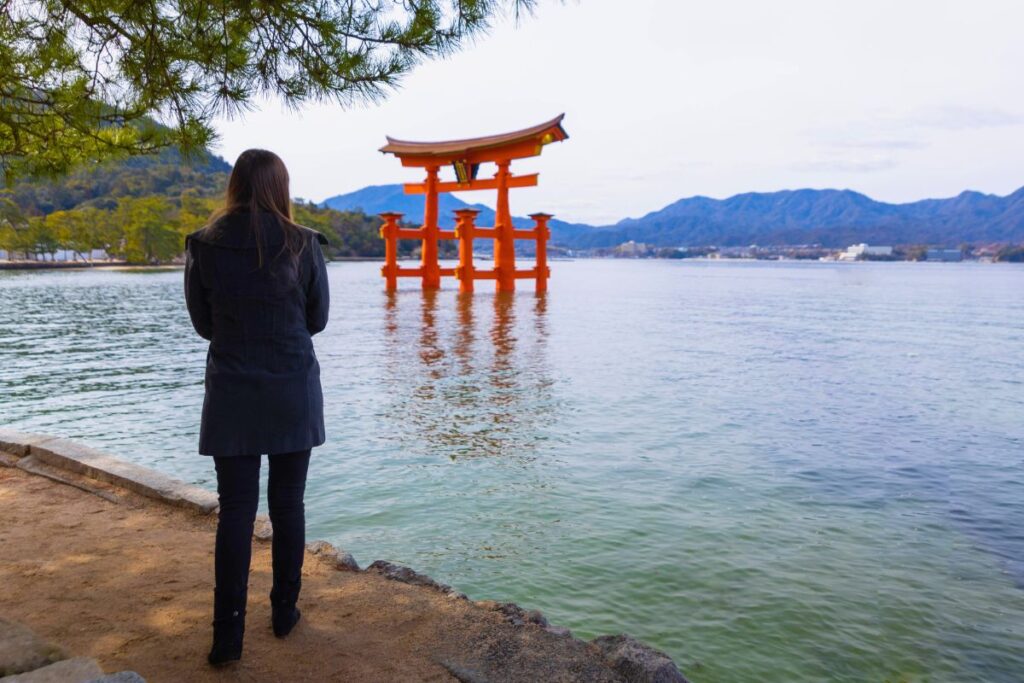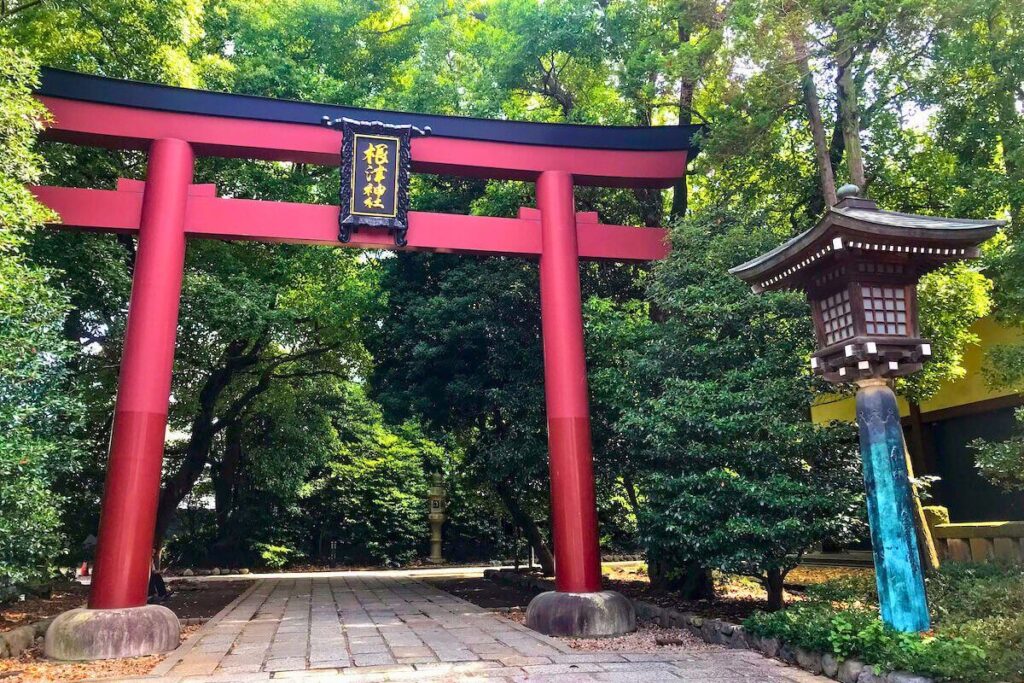
Last updated on December 18, 2023 by Krysti
So you’ve weighed the pros and cons and have decided that you’d like to move to Japan. Now the question becomes – where in Japan should you live?
While the country may be on the smaller side, there are still plenty of options for you to consider. From big cities like Tokyo to cultural hubs such as Kyoto and lesser-known destinations like Sendai, Japan certainly offers a wealth of possibilities.
And narrowing that list of possibilities down to just one is no small task. Believe me, I get it!
That’s why I’ve taken the time to put together this list of the 10 Best Places to Live in Japan.
I used a combination of my own personal experience, input from other expats, and extensive online research to come up with, what I think, is a pretty inclusive list – one that has a little bit of something for everyone.
So, whether you’re drawn to the vibrant energy of a metropolis, the cultural richness of historic cities, or the serene beauty of the countryside, I’ve got you covered.
That being said, let’s go ahead and find you the perfect place to call home in Japan!
Factors to Consider When Choosing the Best Places to Live in Japan
Before we dive in and discuss specific destinations, let’s take a moment to highlight a few factors that you should consider when deciding where to live in Japan.
Availability of Jobs
One factor that will undoubtedly play the most significant role when choosing your new home in Japan is the location and availability of jobs. Generally speaking, larger cities usually offer more employment opportunities, while small rural towns tend to have limited options.
Of course, this also depends on the type of employment that you’re interested in pursuing. For example, if you plan to teach English, you’ll have more destinations to choose from. This is because there are schools all over the country that utilize foreign teachers. Meanwhile, business and industry-specific careers, including those in marketing, tech, and engineering, will mostly be confined to major cities.
For those who plan to work remotely you certainly have more flexibility and freedom regarding where you live in Japan. However, if you’re interested in using co-working spaces or would like to network with Japanese businesses, then you’ll need to set your sights on more developed urban areas.
Cost of Living
Another crucial factor to keep in mind when deciding where to live in Japan is the cost of living. While the country is generally more affordable than the Western world, some destinations are more expensive than others.
Broadly speaking, large cities, such as Tokyo and Osaka, come with higher price tags. This is especially true in regards to housing and utilities. There’s just such a high demand for apartments in the city that prices can be quite high. At the same time, however, jobs in urban areas do tend to offer higher salaries, which helps to offset costs a bit.
Meanwhile, rural areas are generally considered to be more affordable. Both housing and utility costs are usually much cheaper when compared to the city (and apartments are typically bigger). However, in the countryside, you will be more removed from amenities and attractions. As such, your transportation costs may be higher here.
Transportation Options
Speaking of transportation, while it’s true that Japan has an excellent public transit system, there are areas of the country where it’s simply not as convenient. So, you’ll need to decide whether or not access to mass transit is important to you while living in Japan.
In general, most cities, especially the major cities, offer extensive public transportation that completely removes the need for a car. You can do pretty much anything you need to do with public transit because it’s so readily available. In addition to this, many cities are walkable and bike-friendly, so getting around is very easy.
Conversely, in rural areas, transportation may be available. However, it typically won’t run as often and may not go everywhere you need it to go. On top of this, places in the countryside tend to be spread out, so biking and walking aren’t always feasible. Given this, it’s usually easier and more practical to have your own method of transportation.
Driving in Japan
Foreigners are allowed to drive in Japan using an International Driver’s Permit. This permit is accepted for up to one year, beginning from the date of entry or until the permit expires, whichever comes first.
If you plan to stay in Japan for a longer period of time, then you will need to obtain a local Japanese driver’s license. You can apply for one through the local Driver’s License Center of your region’s prefectural police department.
Size of Expat Community
Japan is currently home to more than 3 million foreigners who hail from regions across the globe. This means you’ll be able to find expat communities of various sizes throughout the country.
While major cities, like Tokyo and Osaka, are home to large and diverse groups of expats, smaller cities, such as Fukuoka and Sendai, offer more intimate community settings. Meanwhile, in rural areas and small towns, the size of expat communities can vary greatly. You’ll find that some towns may have a few expats, while others may not have any at all.
That being said, one of the greatest benefits of engaging in expat communities is the support they can provide. You will have access to people who are going through the same experiences and understand where you’re coming from. They can help you navigate the country, provide networking opportunities, and be a comforting reminder of home.
In addition to this, international amenities are more common in areas where large groups of expats reside. This includes facilities such as international schools, Japanese language learning programs, and foreign support groups.
The downside to these communities, however, is the barriers they can present when it comes to cultural immersion. Simply put, it’s more difficult to meet locals and make lasting connections when you constantly surround yourself with other foreigners.
This is why some expats opt to live in more rural settings. They may have less access to support and amenities. However, the opportunities for cultural immersion are the greatest in these settings.
Whether or not you wish to join an expat community is a personal decision. There is no right or wrong answer here. It really just depends on what you’re most comfortable with. As well as what you hope to gain from your experience as a foreigner living in Japan.
Best Places to Live in Japan For Foreigners
In no specific order, here are the top 10 places to live in Japan!
Tokyo
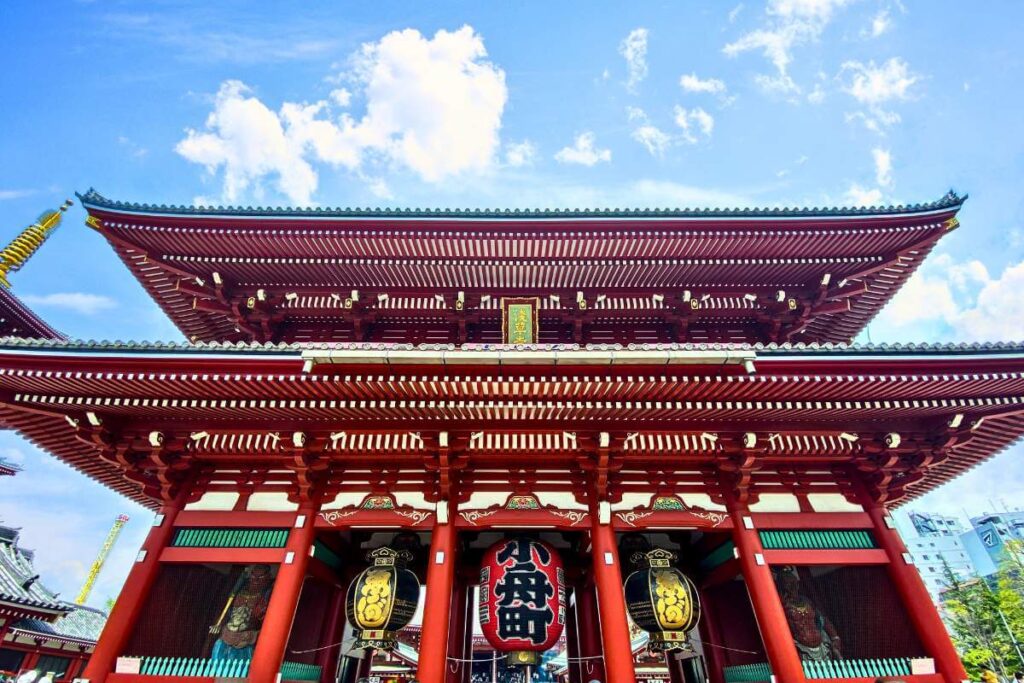
As the capital city, Tokyo is one of the most popular places for foreigners to live in Japan. Photo of Senso-ji Temple.
Not only is Tokyo the capital of Japan, it also happens to be one of the best places to live for foreigners and expats. Known for its vibrant and fast-paced atmosphere, this bustling metropolis is home to an abundance of experiences and amenities. From historic cultural sites to world-class restaurants, endless entertainment venues, and a thriving nightlife, the city truly has it all. On top of this, Tokyo is the most foreign-friendly city in Japan, offering ample employment opportunities, expansive urban amenities, and countless foreign support facilities.
Pros of Living in Tokyo
- Abundant Job Opportunities – Tokyo is a global economic powerhouse that offers a diverse job market, one that is very welcoming to foreigners. Here, you’ll be able to find a wide variety of jobs across many professional industries, including those in marketing, finance, tech, education, and entertainment.
- Extensive Public Transportation – The city of Tokyo is almost entirely connected by public transit. So, no matter where you live or where you’re headed, you’ll be able to find a way to get there without a car. And you can even count on a punctual arrival. That’s right, the transit system in Tokyo is not only extensive, it’s also reliable and efficient.
- Diverse Multicultural Environment – Expats from all over the world live in Tokyo, so it’s very easy to meet people from diverse backgrounds here. Of course, you’ll likely be able to connect with individuals from your home country. But you’ll also have the opportunity to interact with people of various cultures. What’s more, the city is home to a variety of multicultural venues and events that welcome foreigners.
- Infinite Cultural & Recreational Activities – As the capital city, Tokyo is a major cultural and entertainment hub. It literally has everything! From world-class museums to Michelin-star restaurants, grand theaters, trendy art galleries, thriving nightclubs, expansive public parks, sprawling shopping centers, and historic cultural sites – you will never get bored here.
- Ample International Facilities – Given Tokyo’s large expat community, there are a number of international facilities available throughout the city. This includes international schools, international hospitals, language learning programs, and support centers for foreign residents. Many, if not all, of these facilities provide English-speaking employers and/or translators.
Cons of Living in Tokyo
- High Cost of Living – Tokyo is one of the most popular places to live in Japan. So much so, it’s estimated that approximately 13-14 million people live within the city proper. Given this high demand, it should be no surprise to hear that Tokyo is quite expensive compared to the rest of the country. As such, you should be prepared for significantly higher living expenses if you decide to move here.
- Cramped Living Quarters – Japan may be known for its small housing, but in Tokyo, apartments can be incredibly cramped. Because of the city’s popularity and need for housing, most apartment buildings are made to accommodate as many tenants as possible. So, be prepared to downsize if you plan to live here. That is, of course, unless you have a large budget to work with. In which case, you may be able to afford a more spacious, high-end rental unit.
- Intense Crowds – A lot of people live in Tokyo, and a lot of people visit Tokyo, so the city can become very, very crowded. This is especially true during peak rush hour. I’ve been in situations on the subway where I’ve felt like a sardine packed into a tiny tin can – yes, it gets that tight. So, mentally prepare yourself and avoid traveling within the city during rush hour if you can.
If you’d like to live near Tokyo but don’t want to deal with the crowds and high living expenses, consider looking along the outskirts of the city or in nearby towns. Here, you’re likely to find a more tranquil and affordable environment.
Kyoto
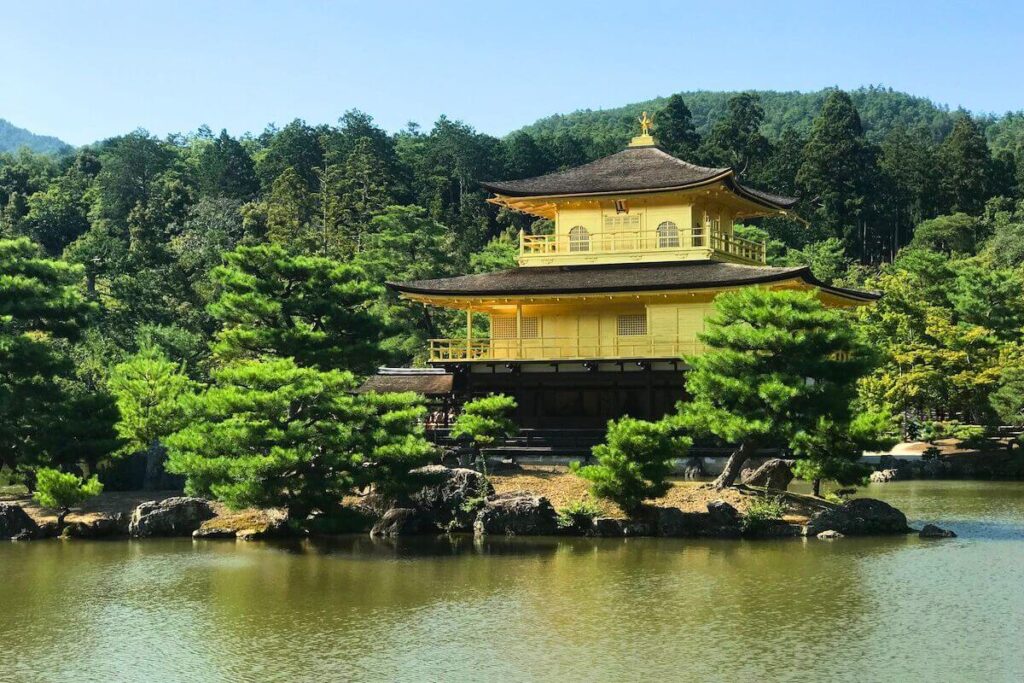
As far as historical cities go, Kyoto is one of the most incredible places to live in Japan. Photo of the Golden Pavilion.
As the country’s cultural hub, Kyoto is an incredible place to live if you wish to experience Japanese culture. Dating back to 794, Kyoto is not only one of Japan’s oldest cities; it was also the country’s capital for a staggering one thousand years! This means Kyoto is home to some of the most important historical sites in the country and hosts some of the largest traditional festivals. In addition to this, the city houses many of Japan’s finest educational institutions, maintains a notably low crime rate, and offers easy access to a myriad of natural wonders and travel destinations.
Pros of Living in Kyoto
- Historical Beauty & Cultural Richness – As the former capital of Japan, Kyoto is home to countless historical and cultural sites. In fact, there are 17 different UNESCO World Heritage sites in and around the city. Some of the most prominent include Kiyomizu-dera Temple, Kinkaku-ji Temple, and Ginkaku-ji Temple. Of course, we also can’t forget about Fushimi-Inari-Taisha Shrine. While it’s not a UNESCO site, this shrine still deserves a mention as it’s composed of approximately 10,000 torii gates!
- Proximity to Nature – Kyoto is a city, yes, but it’s one that is surrounded by mountains and forests. Thus, it’s quite easy to get away and escape into nature. Hiking, in particular, is quite popular, as there are a variety of trails close to the city. In addition to this, boating, biking, kayaking, and swimming are all outdoor activities that can be enjoyed in the area.
- Low Crime Rates – While Japan is a very safe country in general, Kyoto is considered to be especially safe given its low rates of crime. When compared to larger cities, such as Tokyo and Osaka, the city of Kyoto experiences minimal crime across the board. Given this, most people feel very safe and secure in the city, even at night. That being said, it’s always a good idea to remain aware and alert of your surroundings, just in case.
- Top-Tier Educational Institutes – Dubbed the “University Capital of Japan,” Kyoto is an educational powerhouse known for its top-tier institutions. In fact, there are approximately 50 different universities, Japanese language schools, and vocational institutes in the city. Many of them even offer courses in English, which makes Kyoto a central hub for study-abroad students.
- Abundant Travel Opportunities – Given its location in Japan’s Kansai Region, Kyoto offers ample travel opportunities. There are numerous destinations situated nearby that are easily accessible within a few hours by train. Some of the most popular include Osaka, Nara, Himeji, Hiroshima, Miyajima Island, and Kobe.
Cons of Living in Kyoto
- Substantial Tourism & Crowds – Given Kyoto’s historical significance, it is one of the most visited cities in Japan. As such, you can expect to encounter large crowds and an influx of tourists within the city pretty much year-round. So, if you intend to live here, it’s important to be aware of this and to plan your daily commute accordingly.
- High Cost of Living – Kyoto is one of the most popular places to live and visit in Japan. As such, it’s home to many residents and hosts a substantial number of tourists. Given this, the cost of living is much higher here than in many other areas of Japan. If you plan to move to Kyoto, you’ll need to financially prepare yourself and your bank account for those higher expenses.
- Lack of Urban Amenities – As a smaller city, Kyoto doesn’t have as many amenities when compared to larger urban destinations. While you will have access to most of what you’ll need, you may not have as many options. For example, Kyoto has its own shopping malls, but Osaka is home to a greater number of stores with a more extensive selection to choose from. As such, you should be prepared to travel a bit if there are specific services or facilities that you require.
If you love the idea of living in Kyoto but would prefer a calmer and more affordable setting, consider exploring the smaller towns and cities within Kyoto Prefecture. Many of these areas offer easy access to Kyoto’s highlights but tend to be less crowded and more cost-effective.
Osaka
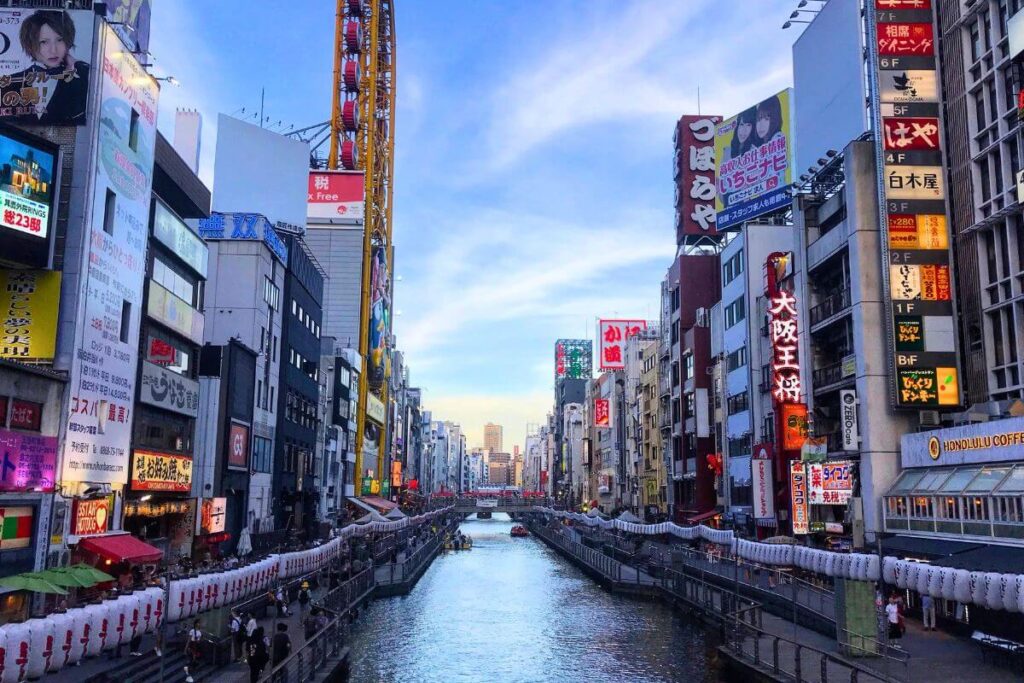
Known for its vibrant nightlight, Osaka is one of the most popular places to live in Japan for foreigners. Photo of Dontonbori River.
If you plan on living in Japan as a foreigner, you should definitely consider moving to Osaka. As an up-and-coming expat destination, the city is renowned for its vibrant nightlife, remarkable local cuisine, abundant job opportunities, and bustling urban atmosphere. However, most importantly, the city ranks exceptionally high in terms of liveability. In a 2023 report released by the Economist Intelligence Unit, Osaka was rated the most liveable city in Japan and the 10th most liveable city in the world. This ranking was based upon more than 30 different factors. And Osaka, in particular, scored very high in the areas of stability, healthcare, education, and infrastructure.
Pros of Living in Osaka
- Global Economic Hub – Second only to Tokyo, the city of Osaka is an economic powerhouse in Japan. Several industries thrive here, including those in manufacturing, medical and life sciences, biotechnology, pharmaceuticals, and environmental technology. In addition to this, ESL and translation jobs are in high demand. This means that job opportunities here are plentiful, even for those who speak English.
- Exemplary Urban Amenities & Infrastructure – As a modern urban center, Osaka is home to numerous top-notch amenities and facilities. This includes some of the best hospitals in the country, a variety of international schools, and numerous support centers and services for foreigners. Aside from this, the city also offers quality public transportation and a well-maintained network of roads.
- Vibrant Entertainment & Nightlife – When the sun sets, Osaka truly comes to life. This is when you can expect to encounter lively entertainment districts complete with bright neon lights, enthusiastic crowds of revelers, and numerous late-night venues. Whether you’re hoping to grab a drink, satisfy your tastebuds, go for a dance, or hit up the mall, you can do it all during the late-night hours in Osaka.
- Exceptional Local Cuisine – Osaka is known for its street food, which many say is the best in the country. From Takoyaki to Okonomiyaki, Daifuku Mochi, Udon, Yaki Soba, and Yakitori, the city offers a wide variety of delectable bites for you to enjoy. And they’re all reasonably priced!
- Abundant Travel Opportunities – Similar to Kyoto, Osaka is centrally located within the Kansai Region. As such, local travel by train is very accessible. You can easily reach several popular destinations, including Kyoto, Kobe and Nara, within a couple of hours. In addition to this, Osaka is home to its own international airport, so travel by air is readily available.
Cons of Living in Osaka
- High Cost of Living – Like other urban destinations on our list, Osaka is not only a popular place to live, it’s also one of the most popular places to visit in Japan. As such, the cost of living in Osaka is above average and much more expensive than the rest of the country. Given this, you should come financially prepared to incur higher living costs, especially if you plan to live in the city center. This is where rent and utilities prices are the highest.
- Crowded Urban Environment – The metro area of Osaka is home to approximately 19 million people, which makes it the third largest city in Japan. It’s also one of the most popular tourist destinations aside from Tokyo and Kyoto. As such, crowds are common, and traffic is likely. If you decide to live here, be sure to plan your commute strategically and give yourself extra transit time.
- Limited Cultural Attractions – While Osaka is home to one of Japan’s most famous castles, the Osaka Castle, it doesn’t offer much else in terms of cultural attractions. Especially when you compare it to nearby Kyoto and Nara, there really isn’t much to see here. So, be aware of that, and just know that you may need to travel a bit in order to experience a more cultural and historical side of Japan.
If you’re interested in Osaka but prefer a quieter and more economical environment, consider one of the many smaller cities that lie nearby within Osaka Prefecture. These municipalities generally offer more affordable living options as well as convenient access to Osaka and its many amenities.
Sapporo
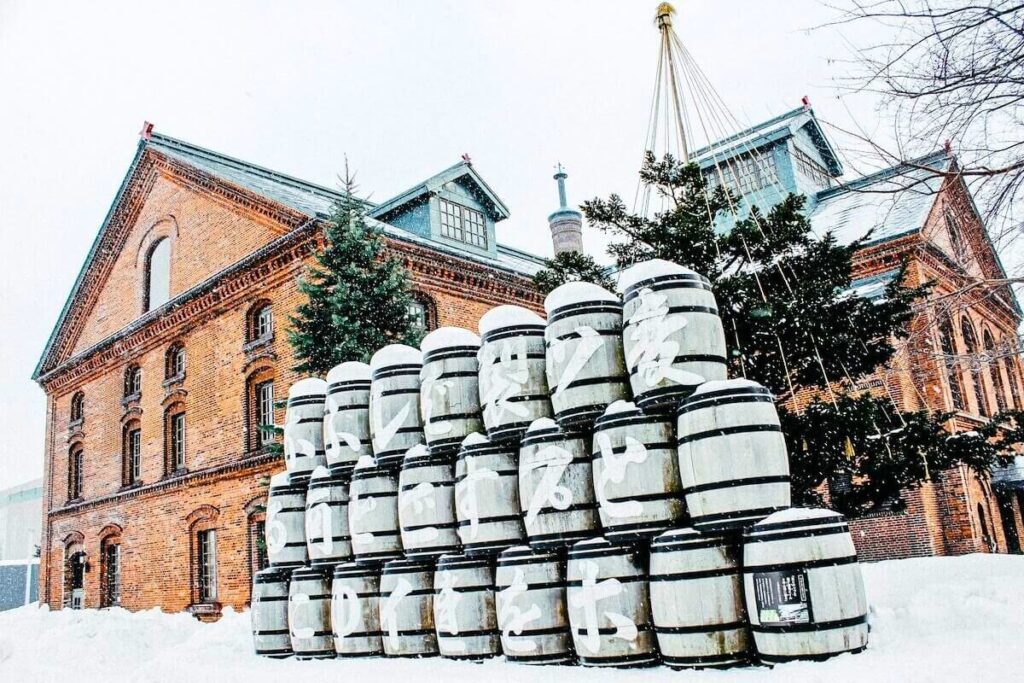
Sapporo is one of the best places to live in Japan for winter fun. Photo of Sapporo Beer Museum by Jaeyoung Geoffrey Kang via Unsplash.
Located on the northern island of Hokkaido, Sapporo is one of the best places to live in Japan for winter enthusiasts. Known for its abundant snowfall, this mountainous destination offers incredible skiing, lively winter festivals, and unforgettable snow-white scenery. In addition to this, the city is renowned for its local cuisine and is home to one of the oldest breweries in Japan. What’s more, the cost of living here is quite affordable even though Sapporo is the capital city of Hokkaido and the largest city on the island.
Pros of Living in Sapporo
- Stunning Natural Beauty – Surrounded by majestic mountains and lush forests, Sapporo offers access to some of the country’s most scenic landscapes. And the best part about it is that the area experiences all four seasons. So, you’ll have the opportunity to witness snow-covered mountains, colorful autumn leaves, bright pink cherry blossoms, and flourishing green forests.
- Ample Outdoor Activities – Given the city’s proximity to the natural world, it’s very easy to partake in outdoor experiences here. During the winter months, skiing, snowboarding, ice fishing, and snowshoeing are quite popular. Meanwhile, summer offers hiking, biking, kayaking, and canyoning.
- Lively Cultural Events – Sapporo hosts a wide variety of celebrations and festivals. However, the most famous is the Sapporo Snow Festival. Held every year in February, this winter celebration attracts over 2 million people from across the globe. All of whom come to catch a glimpse of the festival’s giant, life-like ice sculptures.
- Delectable Local Food – Cities across Japan offer a variety of regional culinary specialties, and the same holds true for Sapporo. In fact, the regional cuisine here is quite popular across much of the country. Some of the city’s most famous dishes include Sapporo ramen (also known as miso ramen), Hokkaido crab, and soup curry. Of course, we also can’t forget about Sapporo Beer, which is Japan’s oldest brand of beer!
- Reasonable Cost of Living – Compared to other large urban centers in Japan, the city of Sapporo is an affordable place to live. Generally speaking, it’s relatively easy to find housing that is fairly priced. And daily living expenses here simply aren’t as high as what you’ll encounter in places like Tokyo and Osaka.
Cons of Living in Sapporo
- Harsh Winter Months – Sapporo may be known as a winter wonderland, but all that snow can create some pretty harsh weather conditions. The city is prone to blizzards and heavy periods of snowfall. This in turn, can trigger very cold temperatures and affect travel conditions. While government officials respond quickly in clearing away the snow, it’s still important to be aware and prepared for this. You’ll definitely want to bring along an abundance of winter clothing if you plan to move here.
- Limited Job Opportunities – Unless you speak Japanese, you won’t find as many job opportunities here, at least not when compared to other urban areas of Japan. Generally speaking, education and tourism are the two biggest fields that most foreigners work in. If you’d like to pursue other employment opportunities in the city, you’ll need to learn Japanese on a somewhat proficient level.
- More Prominent Language Barrier – Speaking of language skills, English is much harder to come by in Sapporo than in other larger urban areas. As such, you’ll really need to know some basic Japanese to get by on a daily basis. If you can, start taking classes before you even move to Japan. It will undoubtedly be beneficial in the long run, but it will also help you out those first few weeks as you adjust and settle in.
If you’d like to experience a snowier side of Japan but want to be closer to larger urban areas, consider moving to Northern Honshu. This region of Japan experiences winter weather similar to Sapporo but is a bit closer to Tokyo and the amenities that it provides.
Nagoya
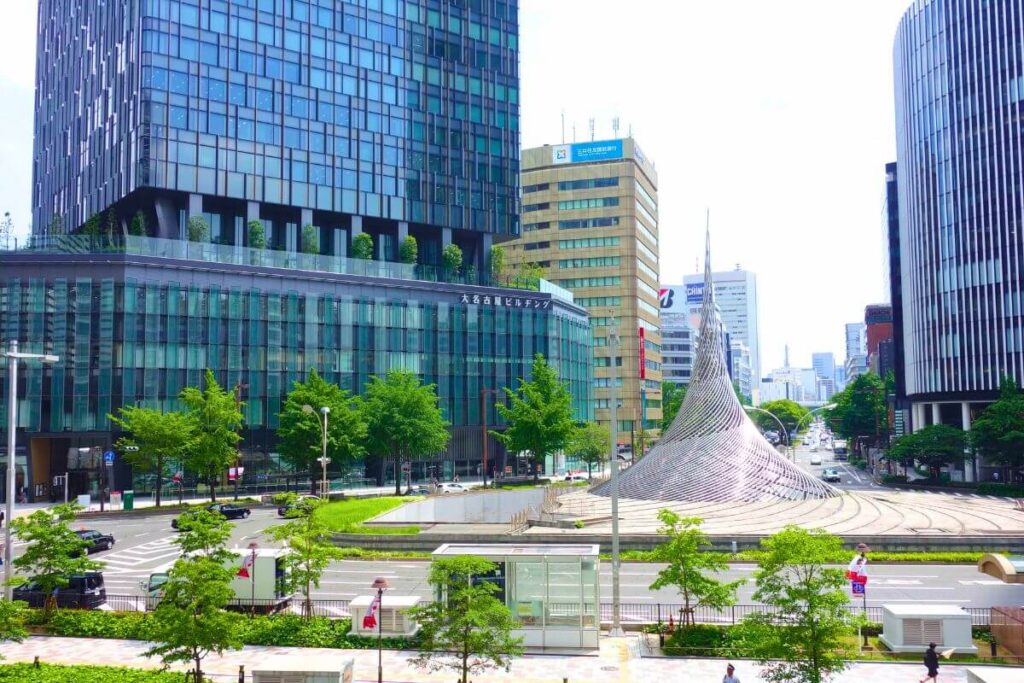
Nagoya is one of the top places to live in Japan for those in the auto industry. Photo of Nagoya Station by Andy Kuo via Unsplash.
Although Nagoya doesn’t top many traveler’s bucket lists, the city is actually a great place for foreigners to live. Located between Tokyo and Osaka, Nagoya is the capital city of Aichi Prefecture and the fourth-largest city in Japan. An economic hub for the auto industry, Nagoya is home to several large-scale car factories, including Toyota, Honda, Nissan, and Mitsubishi – all of which are major employers in the area. On top of this, the city offers a wealth of lesser-known cultural attractions, as well as easy access to nearby tourist destinations and one of the best public transportation systems in Japan.
Pros of Living in Nagoya
- Abundant Job Opportunities – Nagoya offers a wide variety of job opportunities for foreigners, and they all aren’t tied to the auto industry. Of course, car makers are major employers in the city, providing jobs in fields such as manufacturing, sales, and finance. However, there are also several opportunities within education, hospitality, technology, and aviation as well.
- Rich Cultural & Historical Attractions – Dating back to the 1600s, Nagoya is a historic city that offers a variety of cultural attractions. Some of the most famous include Nagoya Castle, Atsuta Jingu Shrine, Osu Kannon Temple, and Meiji-mura Village. In addition to this, the city hosts a number of cultural festivals and houses several impressive museums, theaters, and art galleries.
- Efficient Public Transportation – Some say that Nagoya is home to the best transportation system in Japan. In fact, the city is so well connected that you can travel just about anywhere within 30 minutes or less. Which, if you’ve ever traveled along Tokyo’s subway, you know that’s impressive. In addition to this, trains run very frequently and usually aren’t that crowded.
- Spacious Urban Environment – While Nagoya is Japan’s fourth-largest city, it actually feels quite spacious. It’s not overrun with tourists like many urban areas, so it offers a bit more freedom of movement. On top of this, there are also several parks and green spaces that allow the city to feel a bit more open.
- Ample Travel Opportunities – Given Nagoya’s location in Aichi Prefecture, the city offers quick and affordable access to several prominent destinations in Japan. You can easily travel by train to cities such as Kyoto, Tokyo, Nara, and Osaka right from Nagoya Station. Furthermore, the city is home to its own international airport, so travel across Asia is readily available as well.
Cons of Living in Nagoya
- Limited Urban Amenities – While Nagoya is the fourth-largest city in Japan, it’s still much smaller than Tokyo and Osaka. As such, you can expect to find fewer amenities and facilities here. Sure, you’ll have access to everything you need, but you won’t have as many options. So just be aware of that and understand that you may need to travel a bit to access certain facilities and venues if you opt to live here.
- High Cost of Living – Although Nagoya isn’t as expensive as Tokyo, its cost of living is still above average and can be quite high. Of course, the closer you are to the city center, the more you’ll end up paying. But, in general, you should be prepared for higher living expenses if you move here.
- Reputation as Japan’s “Boring City” – Unfortunately, Nagoya has a bit of a “boring” reputation. In fact, at one point in time, it was labeled the “most boring city in Japan.” While government officials have been working hard to eliminate this designation, it stubbornly hangs around. So, if you move here, don’t be surprised if you get a few questions from friends.
If you like the sounds of Nagoya but would prefer a more affordable option, be sure to check out some of the smaller towns and cities within Aichi Prefecture. Many of them offer lower living expenses but still remain well-connected to Nagoya.
Okinawa
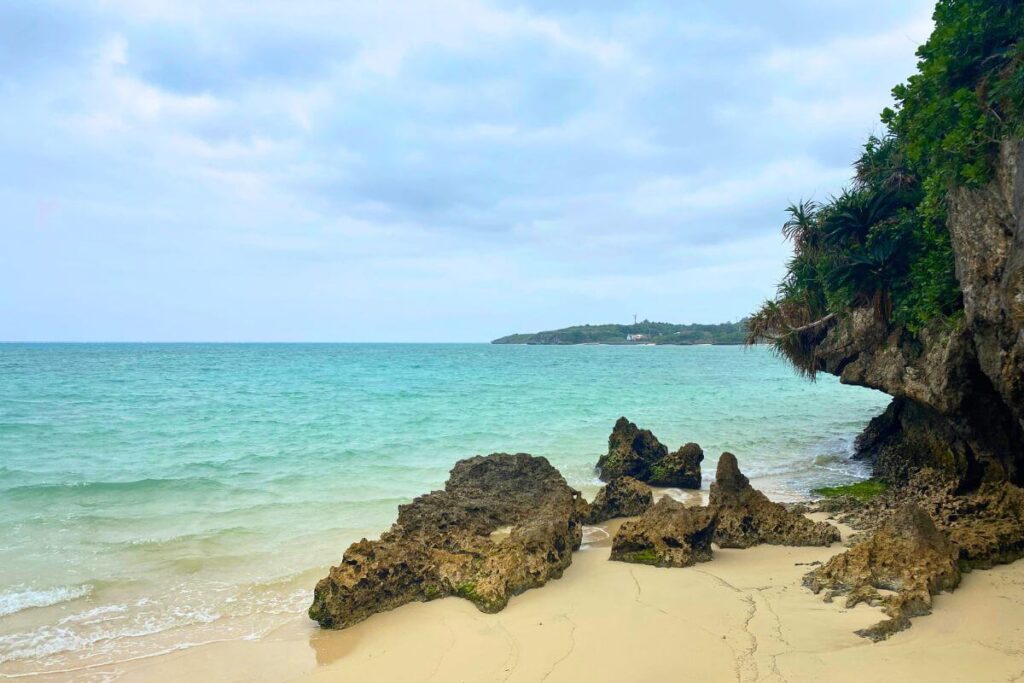
Offering a tropical Japanese experience, Okinawa is one of the warmest places to live in Japan.
Situated within the country’s southernmost prefecture, Okinawa is one of the best places to live in Japan if you love tropical islands. Here, you’ll find white sandy beaches, crystal clear waters, colorful coral reefs, lush green jungles, and endless sunshine. As you may expect, outdoor activities are plentiful, the local food is incredible, and the unique combination of Japanese culture and island life is something to behold. And on top of all of that, Okinawa offers a very affordable cost of living. In fact, it’s one of the cheapest places to live on our list!
Pros of Living in Okinawa
- Warm & Tropical Climate – Possessing a subtropical climate, Okinawa experiences mild winters and warm summers. Temperatures here rarely drop below an average of 60°F (15.5°C) during winter. And, summer reaches average highs of about 90°F (32°C). This allows the island to maintain a mostly tropical atmosphere, complete with pristine beaches and warm waters.
- Ample Outdoor Activities – Given the island’s warm climate, Okinawa offers year-round outdoor activities. Here, you can do everything from snorkeling to diving, hiking, biking, kayaking, and parasailing. In addition, island hopping is also quite popular. There are several outer islands near Okinawa that you can easily explore by boat.
- Healthy Lifestyle – Okinawa possesses one of the world’s highest life expectancies and is home to the longest-living women on the planet. While many factors contribute to this, it is largely believed that Okinawans’ diet, exercise, and strong social ties are the factors that most impact their long lifespans.
- Diverse & Distinct Culture – The culture of Okinawa is incredibly unique and distinct. See, the islands here weren’t always part of Japan. Okinawa used to be an independent country, one that was ruled by the Ryukyu Kingdom for 450 years. During that time, locals developed a culture that was influenced by elements from across Asia. And despite Okinawa’s incorporation into Japan, this culture has continued to flourish and can still be seen today.
- Reasonable Cost of Living – The cost of living in Okinawa is very affordable compared to the rest of Japan. Even though the island is removed from the mainland and does rely on some imports, Okinawa does an excellent job providing for itself. If you shop locally, you can acquire a wide variety of products at a reasonable price. In addition to this, housing on the island is very affordable.
Cons of Living in Okinawa
- Susceptible to Natural Disasters – Given Okinawa’s location in the North Pacific Ocean, it is prone to typhoons and tropical storms. These mainly occur during the summer between June and September and are known to cause heavy rain, strong winds, and flooding. Thankfully, the government has developed robust protocols and has invested in disaster-proof infrastructure to help mitigate the effects of these weather events. That being said, if you decide to move to Okinawa, you will need to remain aware of weather conditions and respond accordingly when alerts arise.
- Isolated from Mainland Japan – Okinawa is significantly removed from mainland Japan, so it is a bit harder to explore the rest of the country. If you want to visit any other area of Japan, you will need to fly there. That being said, regular flights are offered out of Naha Airport and are usually pretty affordable. You’ll just need to plan ahead and book flights early to get the best deals.
- Limited Public Transportation – Public transportation in Okinawa isn’t as extensive or accessible as it is in other parts of Japan. While you can probably get around the main city of Naha by public transit, you won’t be able to get much farther. As such, you should plan to purchase a car if you end up moving to Okinawa.
If you’re looking for a warm environment that’s more connected to mainland Japan, be sure to check out the southern island of Kyūshū. While it’s not quite as warm as Okinawa, you can still partake in outdoor activities for most of the year and will have easier access to the mainland.
Fukuoka
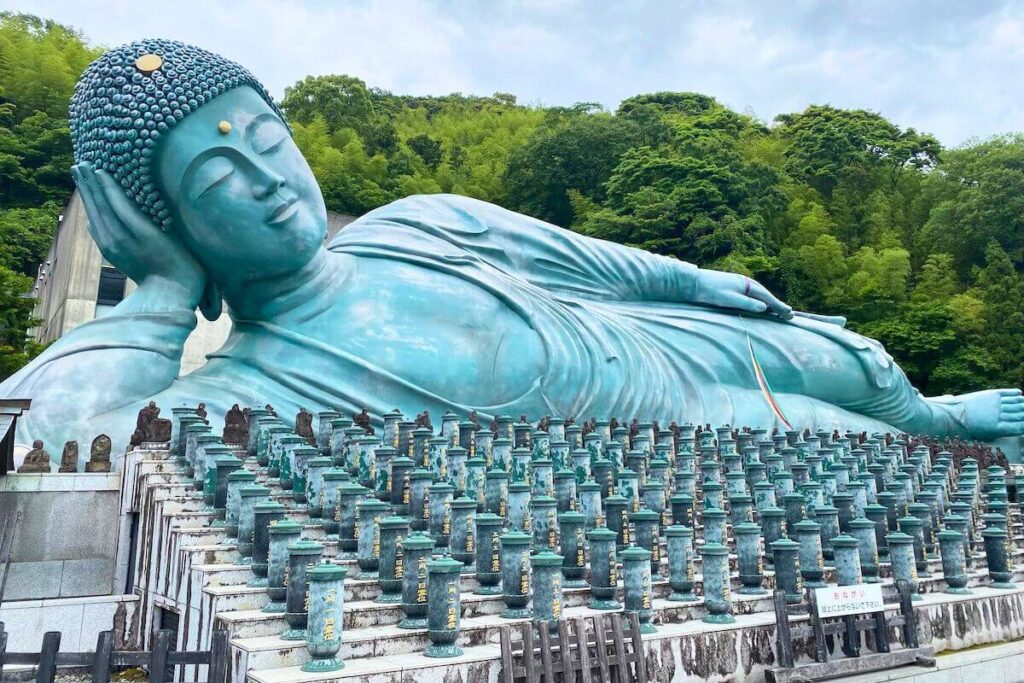
Fukuoka is one of the top places to live in Japan for entrepreneurs and start-ups. Photo of Nanzoin Temple.
Home to an innovative group of startups and tech companies, Fukuoka is one of the best cities to live in Japan for entrepreneurs and new business owners. Located on the southern island of Kyūshū, this port city is sometimes referred to as the Silicon Valley of Japan. With a plethora of job opportunities, it’s relatively easy for foreigners to find employment here. What’s more, the city is renowned for its beautiful natural surroundings and offers a plethora of rich cultural experiences, delectable local cuisine, and ample travel opportunities.
Pros of Living in Fukuoka
- Abundant Job Opportunities – As a “startup city,” Fukuoka is very welcoming to foreigners and the development of new businesses. In fact, the city now offers a new Startup Visa for foreign entrepreneurs. So, if you’re looking to create your own business overseas, Fukuoka is undoubtedly the place to do it. And, of course, with the creation of new companies comes the demand for more employees.
- Beautiful Natural Surroundings – As a port city, Fukuoka offers some incredible ocean views. In fact, the city is home to several beaches and marine parks, many of which are located within the city. On top of this, the surrounding area is known for its spectacular natural features. You can find everything from lush forests to scenic mountains, serene rivers, and cascading waterfalls – all within train or driving distance from the city.
- Exceptional Local Cuisine – The local street food in Fukuoka is well known, and for a good reason – it’s delicious. Many vendors operate out of Yatai food stalls, where patrons sit in a circle centered around the chef. At these intimate open-air eateries, you can sample a wide variety of local dishes, including specialties such as Hakata ramen, mentaiko, yaki-ramen, and Hakata udon.
- Rich Cultural Attractions – With roots dating back to the time of the Samurai, Fukuoka is a historic city that offers a plethora of cultural attractions. Some of the most popular include Fukuoka Castle, Kushida-jinja Shrine, Dazaifu Tenman-gū, Nanzoin Temple, and Tochoji Temple. In addition to this, the city hosts a number of lively cultural festivals throughout the year.
- Ample Travel Opportunities – Since Fukuoka is the capital of Fukuoka Prefecture and the largest city on Kyūshū, the city is very well connected to the rest of the island. As such, travel is incredibly accessible and affordable. You can catch a train from Fukuoka to several destinations within Kyūshū. And it’s even possible to travel up to the main island of Honshu by train. Meanwhile, direct international flights are available to several nearby Asian countries.
Cons of Living in Fukuoka
- Removed from Mainland Japan – Given that Fukuoka is on the island of Kyūshū, it is a bit removed from Japan’s large urban centers. If you wish to visit, say, Tokyo or Osaka, you’ll likely need to fly, as it takes a couple of days to travel there by train. That being said, you can usually find direct flights at pretty affordable prices.
- Smaller International Community – Although Fukuoka is growing and attracting more foreigners, the city doesn’t have nearly as many international residents as Tokyo or Osaka. Given this, it may be a bit more challenging to connect with other expats. Which could be a good thing or a bad thing, depending upon how you look at it.
- High Cost of Living – While Fukuoka may be more affordable than other large cities on our list, the cost of living here is still above average for Japan. This is especially true if you opt to live within the city center. Generally speaking, groceries and utilities are affordable. However, housing can be quite pricey depending on the size and location of your rental unit. As such, you’ll want to plan your finances accordingly if you decide to live in Fukuoka.
If you’d like to live near Fukuoka but prefer to be a bit more off the beaten path, consider one of the small coastal towns south of the city. While they’re close enough to offer easy access to Fukuoka, they’re also a bit calmer and less crowded.
Hiroshima
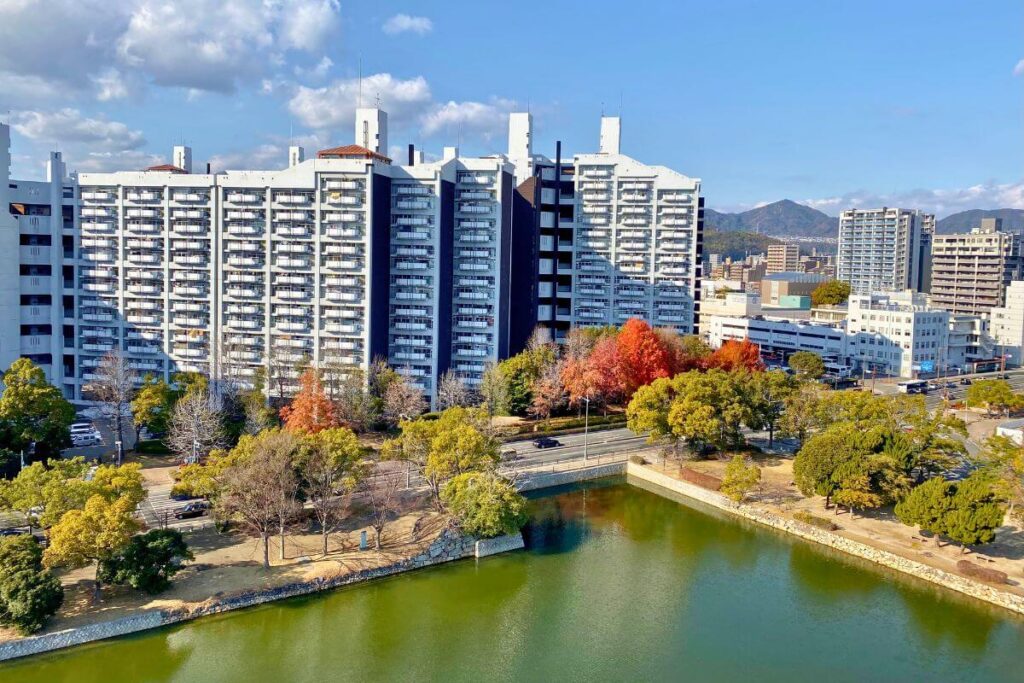
As far as small cities go, Hiroshima is one of the most best places to live in Japan.
Hiroshima may be known as the site of the world’s first atomic bomb, but it has so much more to offer than that. While a small city, Hiroshima is home to a plethora of historical sites, incredible natural scenery, and a quiet, peaceful atmosphere. Moreover, its proximity to the countryside provides the opportunity to see a side of Japan that most tourists never witness. Couple all of this with its affordable cost of living, and you’ve got one of the best places to live in Japan.
Pros of Living in Hiroshima
- Historically Significant – You’re probably familiar with the history of Hiroshima, so it should be no surprise to hear that the city is home to several important historical sites. Of the many related to the bombing of the city, some of the most prominent include the Atomic Bomb Dome, the Hiroshima Peace Memorial Museum, and the Peace Memorial Park. In addition to this, the city offers several cultural sites, such as the Hiroshima Castle and Shukkeien Garden.
- Quiet & Peaceful Atmosphere – The city of Hiroshima is small and not all that touristy, so it generally offers a calmer and more peaceful atmosphere. Sure, you’ll probably run into some tourists here and there. But for the most part, people who visit Hiroshima are very respectful and considerate, given the city’s history. Furthermore, residents tend to be kind and polite to one another. So, overall, it’s a pretty tranquil and serene place to live.
- Stunning Scenic Beauty – As a coastal city, Hiroshima is surrounded by natural beauty and picturesque landscapes. The most notable of which is the Seto Inland Sea, a stunning blue body of water that features a variety of lush green islands. Meanwhile, to the west of the city, you’ll find several towering mountains and flourishing forests. Many of which become incredibly colorful during the fall months when the leaves change colors.
- Proximity to the Countryside – The prefecture of Hiroshima is home to countless small towns and villages. Many of which are within driving distance from the city. These rural areas are so unique and provide the opportunity to see a different side of Japan. In my opinion, every foreigner who lives in Japan should visit the countryside at least once.
- Affordable Cost of Living – Unlike many other cities on our list, Hiroshima is actually a very affordable place to live. It’s more removed from the big urban areas, so there isn’t as much of a demand for housing here. As such, you can usually find rental units that are reasonably priced throughout much of the city.
Cons of Living in Hiroshima
- Minimal Job Opportunities – While Hiroshima offers jobs for foreigners, the job market is generally very limited compared to larger cities like Tokyo and Osaka. If you have a very specialized field that you work within, you may have a difficult time finding a job here. In addition, many employers do require some level of proficiency in Japanese. Unless you plan to teach English or work remotely, it’s in your best interest to learn a bit of the language before you start applying for jobs in Hiroshima.
- Limited Public Transportation – Although Hiroshima does offer public transportation, it’s not as widespread as what you’d find in other cities. To begin with, Hiroshima doesn’t have a subway system; instead, it relies upon buses and trams. While these are pretty reliable, you may not be able to get everywhere you need to go by using them. As such, you may find it easier to live in Hiroshima, if you have your own method of transportation.
- Less Urban Amenities – Since Hiroshima is a smaller city, it has fewer amenities and facilities when compared to its larger counterparts. This is especially true for foreign-focused facilities. You may not always be able to find what you’re looking for or you may have fewer options to choose from. Given this, you should be prepared to travel if there are specific services or facilities that you’d like to access.
If you prefer a small city like Hiroshima but would like more job opportunities, look around the outskirts of urban centers like Tokyo or Osaka. Here, you should be able to find that small city setting, but with more job opportunities, it just may require a bit of a commute.
Yokohama
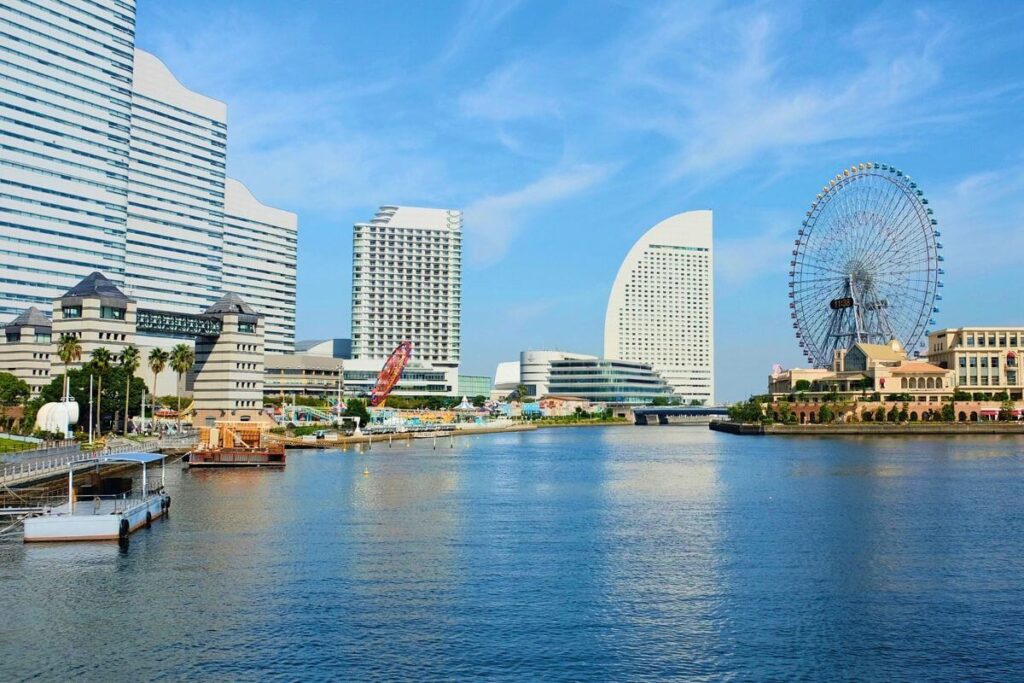
A popular alternative to Tokyo, the city of Yokohama is one of the best places to live in Japan. Photo of waterfront by Lana via Pexels.
Situated only 35 kilometers from Tokyo, Yokohama is quickly becoming a major alternative for foreigners looking to live near the country’s capital city. In fact, many expats have opted to live in Yokohama and simply commute to Tokyo – it’s only a 30-minute train ride, after all. But what are the actual benefits of this? Don’t worry; there are plenty. In addition to being significantly less crowded, Yokohama offers a culturally diverse community, ample urban amenities, abundant travel opportunities, incredible waterfront views, and a spacious, easy-going environment.
Pros of Living in Yokohama
- Stunning Natural Views – As a port city, Yokohama is home to scenic views of Tokyo Bay and Boso Peninsula. In fact, there are several waterfront parks and observation towers from which you can take in this incredible scenery. What’s more, the city also boasts unhindered views of Mt. Fuji, a sight that is sure to never get old.
- Spacious & Uncrowded City – Home to a quarter of Tokyo’s population, Yokohama is significantly less crowded than its counterpart to the north. Couple this with the fact that it receives fewer tourists, and you’ve got yourself a major Japanese city that feels relatively spacious and less crowded.
- Culturally Diverse Community – The international community within Yokohama is quite large and continuously growing. As more and more expats discover the city as an alternative to Tokyo, they’re making the decision to move there. Given this, you can expect to encounter a wide variety of foreigners from around the world.
- Ample Urban Amenities – Despite Yokohama’s more manageable population, it’s still Japan’s second-largest urban center. As such, the city is home to ample attractions and amenities, including foreign support facilities. From international schools to massive shopping malls, language learning centers, cultural sites, trendy art galleries, international hospitals, and fine-dining restaurants, you can find just about everything you need in Yokohama.
- Abundant Travel Opportunities – While the closest airport to Yokohama lies in Tokyo, it’s only twenty minutes away by train. So you really do have access to endless travel possibilities here. Moreover, the bullet train regularly passes through Yokohama, making domestic travel to some of Japan’s more famous cities relatively quick and easy.
Cons of Living in Yokohama
- Increased Risk for Natural Disasters – Unfortunately, most of Japan is prone to earthquakes. Yokohama, however, is uniquely situated near several major fault lines. This means that the city faces a higher risk when it comes to natural disasters of this kind. While the government has put in place measures to help mitigate the effects of potential earthquakes, it’s still something to be aware of if you decide to move to Yokohama.
- High Cost of Living – Even though Yokohama is much more affordable than Tokyo, the city still has a higher-than-average cost of living compared to the rest of the country. As such, you should expect to spend more not only on housing but on basic living expenses as well. This includes everything from utilities to food, entertainment, and transportation.
- Less Cultural Immersion – Because Yokohama has such a large foreign population, achieving cultural immersion can be a bit more challenging. While not impossible, you will need to put in more work if you wish to make local connections and fully engage in the Japanese community.
If you’d like to live close to Yokohama and Tokyo but prefer to partake in more cultural immersion, look on the outskirts of both cities. Here, you’ll find many smaller towns and cities that offer more authentic experiences.
Sendai
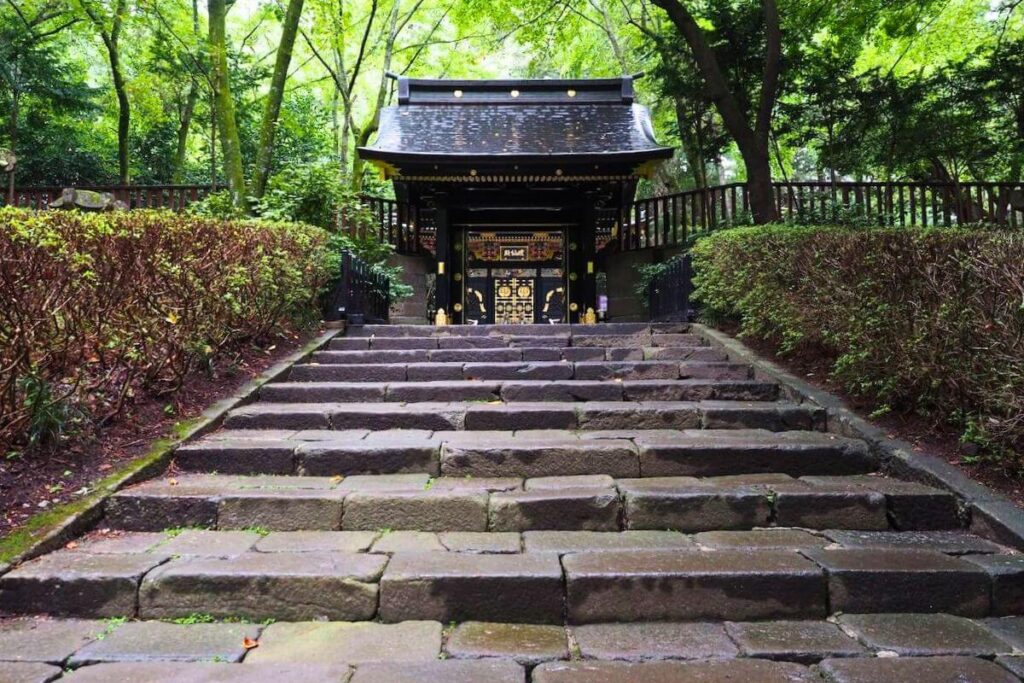
Many expats consider Sendai to be one of the friendliest places to live in Japan. Photo by Shino via Unsplash.
If you’re in search of an off-the-beaten-path destination, look no further than Sendai. Located in northern Honshu, this lesser-known city is Miyagi Prefecture’s capital and the region’s largest city. Surrounded by forests, ocean, and mountains, Sendai is a vibrantly green natural escape despite its urban setting. Outdoor activities are plentiful here, vibrant cultural attractions abound, and the city offers a close-knit small-town community vibe. While there aren’t too many foreigners here, those who call Sendai home consider it to be one of the best places to live in Japan.
Pros of Living in Sendai
- Small-Town Community Feel – Although Sendai is home to approximately one million residents, the city still manages to offer a small-town community feel. With limited tourists and a small expat community, it’s very easy to get to know the locals and become a part of the community.
- Vibrant Cultural Attractions – Dating back to the 1600s, Sendai is a historic city that offers a wealth of cultural and historical attractions. Some of the most prominent include Zuihoden Temple, Osaki Hachimangu Shrine, and Sendai Castle (also known as the Aoba Castle Ruins). In addition to this, the city hosts a number of cultural festivals, the most famous of which is the Sendai Tanabata Festival.
- Stunning Natural Beauty – Dubbed the “City of Trees,” Sendai offers a wealth of natural attractions and breathtaking landscapes. Within the city limits, you’ll find several large flourishing parks and a serene river that flows through its urban center. Meanwhile, along the outskirts of the city, you can take in year-round views of the ocean, mountains, and several forests.
- Ample Outdoor Activities – Given its proximity to nature, there are plenty of outdoor activities to enjoy near Sendai. Some of the most popular include biking, hiking, paddle boarding, fishing, boating, camping, and skiing. You can even go chasing waterfalls here. Akiu Great Falls, which is located about 30 minutes from the city center, is one of the country’s most famous waterfalls.
- Affordable Cost of Living – Even though Sendai is the largest city in the Tohoku Region, the cost of living is still quite affordable here. Housing, in particular, appears to be quite reasonable, as are many other living expenses. Compared to larger cities, there isn’t as much of a demand here, so it helps keep costs down.
Cons of Living in Sendai
- More Prominent Language Barrier – Since Sendai isn’t a well-known city, the area has experienced less foreign influence. This means that you’re likely to encounter a greater language barrier here than if you were to live in larger urban centers. Given this, it’s best to learn basic Japanese if you plan to move to Sendai.
- Limited Employment Opportunities – Along those same lines, English-speaking employment opportunities in Sendai can be hard to come by. While there are several jobs in engineering, tech, hospitality, sales, and manufacturing, most require at least a basic level of Japanese fluency. Unless you plan on teaching English, you’ll likely need to learn some Japanese if you’d like to live and work in Sendai.
- Harsh Winter Conditions – Sendai is located in the northern area of Japan. As such, it does experience harsher weather conditions during the winter months. While the city rarely sees snow, it does get hit with some pretty cold temperatures. That being said, the further inland you go, the more snow you’re likely to encounter. So, if you plan to explore beyond the city limits, be aware that travel conditions may be affected during the winter.
If you like the sounds of living a bit off-the-beaten path but would prefer a warmer environment, check out southern Honshu. There are several lesser-known towns and cities spread throughout the countryside here, and many of them offer warmer temperatures year-round.
3 Things To Do Before Deciding Where to Live in Japan
Now that you’ve narrowed down your list of places to live in Japan, you’ll want to do a bit more homework before making a final decision.
Visit Your Intended Home
If you haven’t visited the destination you intend to move to, and you have the means to do so, I highly recommend planning a trip. You can read about and research a place extensively. However, you’ll never know for sure if you actually like it until you visit it for yourself. In my opinion, this is the only way that you’ll truly be able to get a feel for a location and decide if it’s a right fit for you and your lifestyle.
This is especially true if you’ve never visited Japan before. The country is very different from the Western world, and, as such, it’s important to experience those differences. This will allow you to gain a greater understanding of the cultural norms and expectations of your potential new home.
And while you’re there, you can take advantage of your trip and explore all that the country has to offer. There are so many incredible places to visit as a first-time traveler to Japan.
Extensively Research Job Opportunities
If you plan to work in Japan, you’ll want to extensively research the job opportunities that are available to you. And you’ll want to thoroughly review the requirements for each job. Compare your professional skills and background, paying particular attention to language requirements. While there are English-only speaking jobs available, many employers prefer some level of Japanese fluency. So it may be in your best interest to plan ahead and start taking language courses as soon as possible.
Once you’ve found a few jobs you’d like to pursue, go ahead and apply for them. If you can secure employment before you move, it will make things so much easier. Especially if your ultimate goal is to obtain a work visa or a highly skilled professional visa.
As a bonus, some companies may even provide you with a stipend or compensation for your move, helping to ease the financial burden of relocating to Japan.
Reach Out to Other Foreigners
I also recommend reaching out and connecting with other foreigners who already live in Japan. Join Facebook groups and online forums, and use your personal connections to network and gain contacts. This is an important step not only for practical reasons but also for moral support.
Moving to a new country can be complicated, and when you’re trying to decide exactly where to live, it can feel even more overwhelming. There are just so many options to consider and so many factors to keep in mind. So, if you have someone you can reach out to, someone who lives in the city that you’re considering moving to, it can be a huge help. They’ll be able to answer your questions honestly, describe what it’s like to live there, and provide advice when it comes time to relocate.
Moreover, you’ll have built-in friends, which is a huge bonus. It can be hard to meet people overseas, especially when you’re first settling in. So, it’s nice to have those connections and contacts established ahead of time.
Frequently Asked Questions About Places in Japan to Live
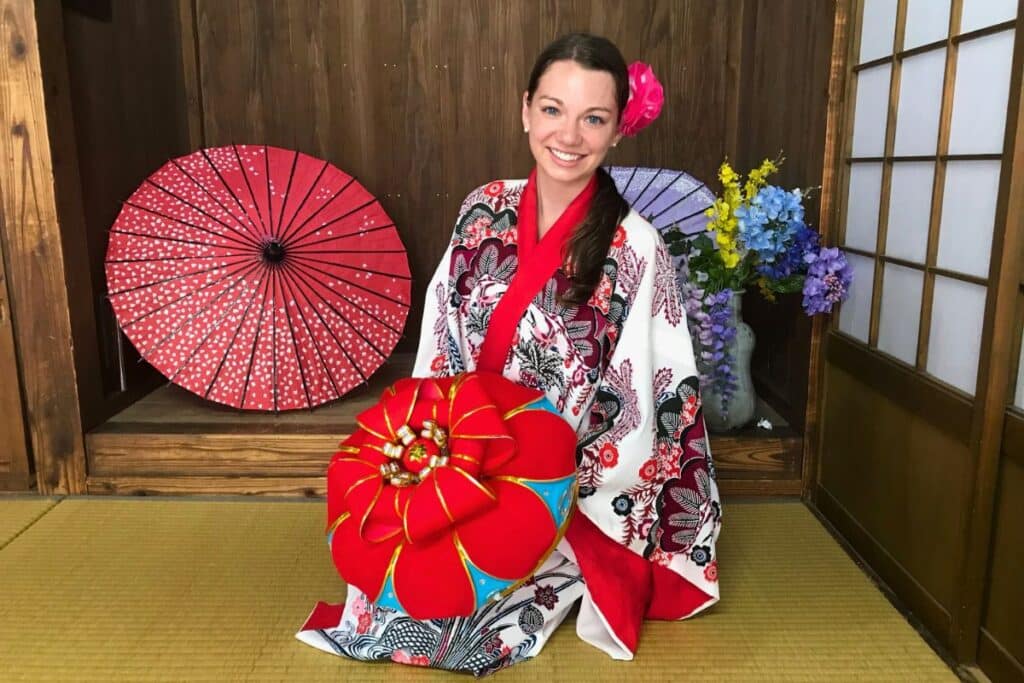
In my opinion, Japan is an absolutely wonderful place to live!
Here are my thoughts on some commonly asked questions about living in Japan.
Is Japan a Good Place to Live for Foreigners?
In my opinion, Japan is a great place to live for foreigners! To begin with, the country is known to offer a high quality of life. In fact, it ranks above average in several categories, including education, safety, employment rates, environmental quality, and life expectancy. In addition to this, the country provides a wealth of community perks. From its vibrant culture to its beautiful landscapes, delicious food, and friendly communities, Japan is undoubtedly an incredible place to call home.
What Part of Japan Has the Most Foreigners?
A large majority of foreigners live in Japan’s capital city, Tokyo. This is where many of the country’s international jobs are located. So, it’s typically one of the easiest places for expats to live. That being said, the nearby cities of Osaka and Yokohama are steadily becoming more popular places to live in Japan. As such, both cities have seen a recent increase in foreign residents.
What City in Japan Has the Best Quality of Life?
According to Numbeo, Tokyo has the highest quality of life in Japan and ranks fourth in Asia overall. This is determined based on a number of factors, including the cost of living, crime rates, pollution, health care, traffic, and affordability of housing.
What Is the Most English-Friendly City in Japan?
The capital city, Tokyo, is probably the most English-friendly city you’ll find in Japan. It’s home to the most foreigners and receives the most international tourists. As such, there’s more of a need for locals here to speak English. That being said, English isn’t widely spoken throughout the country. So, no matter where you go, you should still be prepared for a language barrier.
If you’re serious about living in Japan, I highly recommend learning at least basic Japanese to help you get around. It’ll make life a bit easier for you. And I know many locals appreciate it when foreigners attempt to speak their language – even if it isn’t perfect!
You can also utilize travel apps, such as Google Translate, to help navigate the language until you understand it better.
What Is the Safest Japanese City?
As a whole, Japan is one of the safest countries in the world. According to the Global Peace Index, Japan ranks as the 9th safest and most peaceful country. So, pretty much anywhere you go, you should feel relatively safe. That being said, some of Japan’s safest cities with the lowest crime rates include Kyoto, Nagoya, Sapporo, and Sendai.
Is It Easy to Move to Japan?
While moving to a new country can certainly be overwhelming, moving to Japan isn’t as difficult as you might think. Yes, there are a lot of steps and a lot of paperwork involved. However, as long as you follow the correct administrative procedures, the process should be relatively straightforward. In fact, due to Japan’s shrinking population, the Japanese government is actively encouraging foreigners to move to the country. They’ve even taken steps to simplify the immigration process and expand visa options.
Final Thoughts: Best Places to Live in Japan
No matter where you end up living, you’re sure to have an absolutely incredible experience. Japan is an amazing country and has so much to offer its foreign residents.
Just be sure to do your research and really think about your priorities. The goal here is to find a destination that most closely aligns with your lifestyle so you can make the most of your time in Japan.
Do you live in Japan? Are there any other cities you’d add to this list of places to live in Japan? Let me know in the comments below!
Love this post about where to live in Japan? Pin it now for later!
